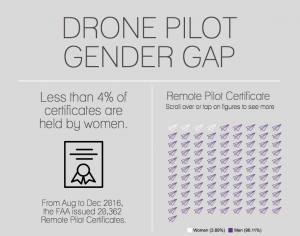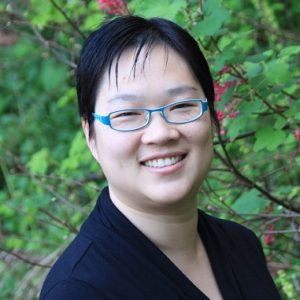Kam Yee: BeaconSkySurvey
Kam Yee is an aerospace geek, in the absolute best sense of the phrase. “I LOVE aerospace. I used to teach at a local aerospace museum. I have a few dozen student pilot flight hours under my belt. Nothing makes me happier than sitting by the airport while studying aviation charts,” says Yee, a drone pilot and entrepreneur. As the founder of BeaconSkySurvey, an aerial mapping and surveying providers firm, with a Master’s diploma in Space Studies, Yee is aware of precisely what it takes to be a profitable girl in the drone business.
She additionally is aware of how few of them are on the market. In an evaluation of the FAA’s 2016 civil airmen statistics, Yee discovered that fewer than four% of distant pilot certificates are held by girls.

see full interactive graphic at BeaconSkySurvey
The low illustration of girls isn’t distinctive to drones: the Airline Pilots Association (ALPA) says that ladies make up solely about 5% of their greater than 50,000 members. “It’s no secret that historically women are marginalized from the aerospace industry,” says Yee. “In that context, it’s not surprising at all that we have a low number of women with FAA certified remote pilot licenses.”
Yee says that the drawback isn’t just one of training, however one of skilled setting. “Despite cultural pressures that discourage girls and women be interested in aviation, we know that many women and girls still pursue it as a career,” says Yee. “The NSF-funded 2012 examine Stemming the Tide: Why Women Leave Engineering discovered that there’s a vital attrition charge of girls engineers after they efficiently exit the tutorial STEM pipeline. Even girls who spent assets to go to varsity and have a profession in engineering discover themselves being socially remoted at the work place and professionally held again.”
Asked what she sees as a possible resolution to the hole, Yee says that the treatment is two-fold: hiring and retention. Practicing inclusive hiring and recruitment methods will assist, however promotion alternatives and equal pay are the finest approach to preserve girls in the business. “Inspiration and mentors can’t keep us in the industry,” says Yee. “Steady honest paychecks and professional development keep women in the drone industry.”
An excellent scientist, Yee factors out that the knowledge set has limitations which would possibly go away room for some optimism. “Part 107 has only been active since Aug 29, so this is only data for 4 months,” she says. “I anticipate a slightly different picture in the 2017 data set, hopefully a little more representation of our amazing women.” Additionally, she factors out that as the certification course of was simpler for these already holding a Part 61 pilot’s license – principally males, as referenced above – these pilots could have had a better illustration in the early figures.
Despite the low numbers, Yee says that the drone business is usually a nice house for ladies entrepreneurs.
“Operating as a drone service provider is a relatively low barrier to entry small business. Thanks to the internet, women do not need to significantly disrupt family life or a day job to develop their skills to enter this business…Women and minorities are also increasingly starting our own business as a way to bypass the “traditional” obstacles and discrimination that we face in work locations. “
 Unmanned Aerial Vehicle The latest drone news
Unmanned Aerial Vehicle The latest drone news




